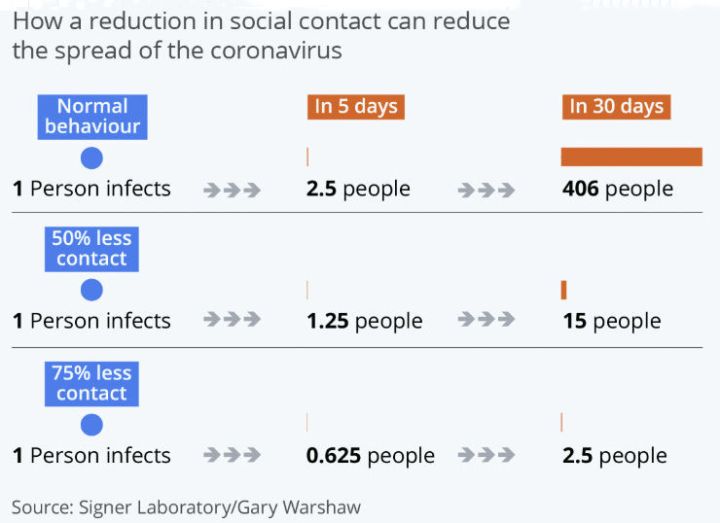In the previous article I looked at the tools the UK Government has available to deal with the coronavirus pandemic. Essentially, they have two. The first is to increase the number of ventilators and ICU beds, which gives more people with severe respiratory infections a chance to recover. That means that doctors and politicians can avoid the unpleasant choice of deciding who gets treated and who does not, but only if the number of infections are curtailed in the first place, so that we don’t run out of ventilators.
The second is the lockdown tool. It is currently a crude On/Off switch, which limits infections by keeping everyone at home. At the moment, it’s not flexible – you’re either locked down, or you’re not, unless you’re a key worker or in an essential industry. The hope is that few key workers will be infected, either because they have sufficient Personal Protection Equipment, or they’re able to social distance whilst doing their jobs. Everyone else has to stay at home. A lucky few can continue to work, but most are either furloughed or become unemployed, putting the economy in stasis.
The Government, quite rightly, is desperate to find ways to ease the lockdown. The question is how to do that without immediately seeing infection rates rise?
The flavour of the day is to roll out smartphone apps which can trace whether you have come into contact with someone else who is infected. The theory goes that if you do, you can be alerted and stay at home until you’re tested. If you have coronavirus, you self-isolate. If you don’t, you’re free to go back to work. Like many proposals for phone apps, it sounds simple, which is why it’s so appealing. Particularly to people like Matt Hancock, who has always had a bit of a penchant for phone apps, which he believes will save the NHS. What nobody is mentioning, is that for contact-tracing to work, we will need the ability to provide at least half a million additional tests that can be administered at home every day.
Read More
